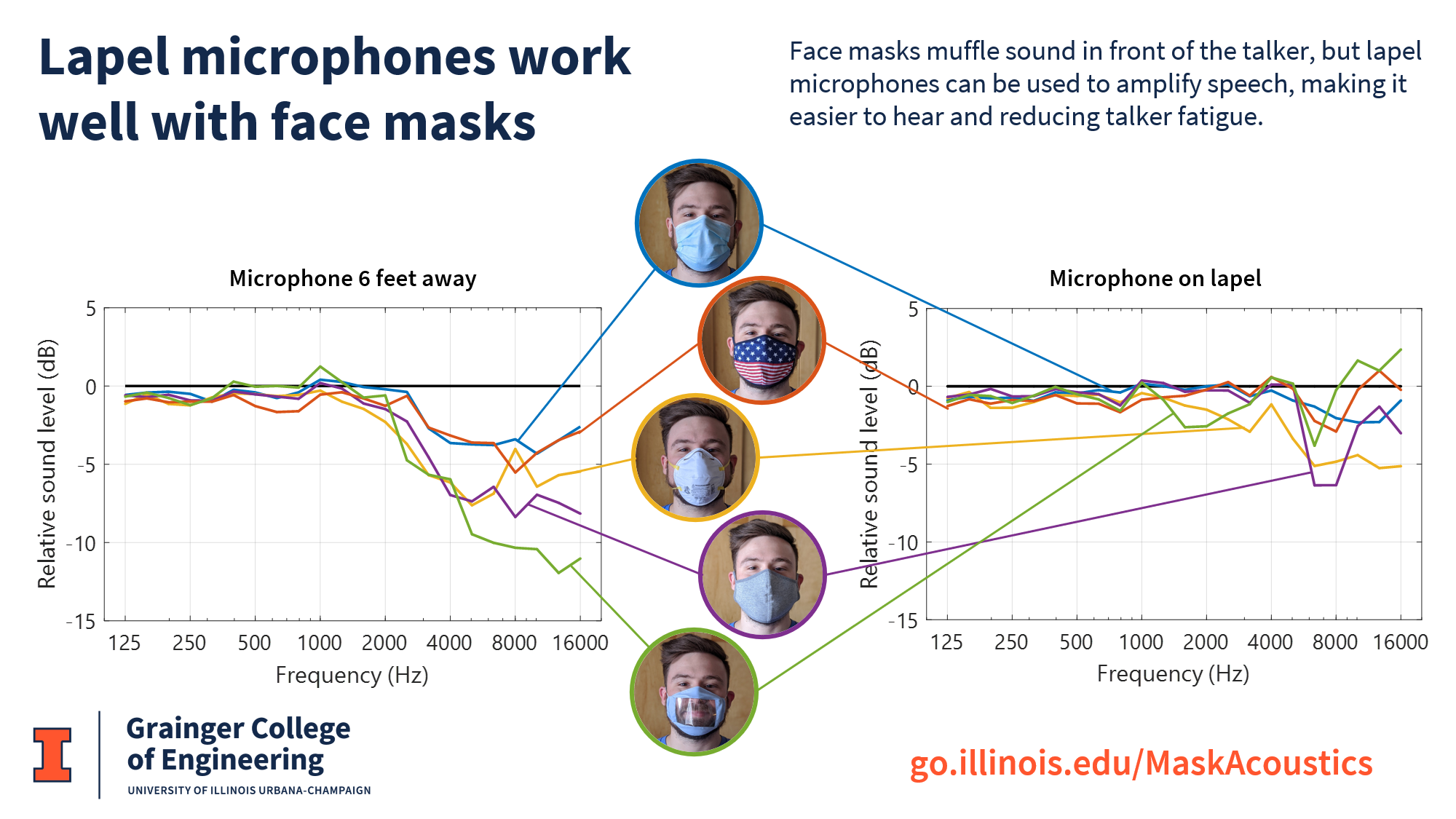Teaching through a mask has been on my mind of late, as I am leading a large, in-person lecture class that starts in a couple of weeks. The University of Illinois Augmented Listening Laboratory has done a nice set of research on face masks, their impact on vocalization and hearing, and how amplification can help. They looked at a common set of available face masks, including cloth, flannel, N95s, KN95s, and surgical masks. They did not take into account filtration efficiency — that is not their area of focus or specialization.

This research showed that more breathable masks, such as surgical masks and plain-weave cotton, transmit sound better than plastic windows and densely woven fabrics. It is important to note that we did not evaluate how effective the masks are at blocking droplet transmission; it is possible that the most effective masks against the virus are the least effective for sound, and vice versa. Fortunately, all masks seem to work well with lapel microphones, which could benefit teachers and others who will need to be heard while wearing a face mask.
This is helpful guidance. I wish they had put more emphasis on some of the masks that perform better from a filtration efficiency (for example, the KN94s). My current thinking, after reviewing their paper and discussions in more public forums is to stick with a KN94 or an N95 in the classroom with a lapel mic.